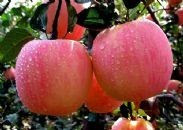Sujat Mantoo
How to recognize genuine Kashmiri
saffron
If
you have never seen Kashmiri saffron threads before and you are planning
to buy genuine Kashmiri saffron elsewhere this information should help you to
recognize a genuine product.
Kashmiri
saffron threads have two unique characteristic that no other saffron in the
world has. First is the physical shape of the thread itself. Kashmiri saffron
threads are flat and thin like a paper and slightly wider especially toward the
tip of the thread than saffron threads from other regions of the world. Second,
is that it feels very smooth and sort of silky to the touch and no other saffron in
the world has this characteristic. For these reasons it is not a very wise
strategy for the packagers to mix Kashmiri saffron threads with non-Kashmiri
saffron threads. There are roamers out there saying that low quality Kashmiri
saffron is being mixed with good quality Iranian saffron and is being exported
and sold as high quality Kashmiri saffron (since Kashmiri saffron is more
expensive than Iranian saffron). This simply is not true because when you mix
non-Kashmiri saffron threads with Kashmiri saffron threads the differences will
be obvious to the eye and you do not need to be a saffron expert to realize
that there are two different saffron threads in the package. The only way this
would be possible is if the entire batch consists of non-kashmiri saffron and
the buyer has no idea of what Kashmiri saffron should look like.

1 gram of pure saffrom from Kashmir costs around 7 (seven) US dollars
10 grams costs 60 (sixty) US dollars
25 grams costs 100 (one hundred) US dollars
Kashmiri man measures saffron
Bunch made of saffron
To buy Kashmiri saffron or for Tour Packages
to Kashmir kindly contact me Sujat Amin Mantoo by Email
at: mossesmantoo@yahoo.co.in or via
cellular/mobile phone: +91-9560275073
.
















